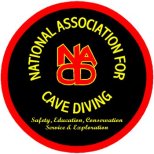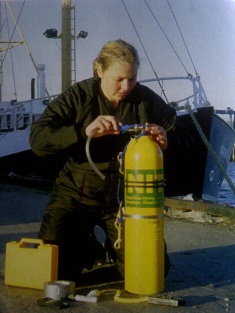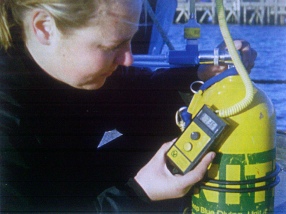At least one diver won’t be spending the holidays with family and friends this year, thanks to the dangerous practice of opening a scuba tank valve all the way, only to close it back a quarter turn. According to an article in the Daytona Beach News-Journal, an Edgewater, Florida, diver perished October 9 with more than 140 bar/2,000 psi remaining in his tank. His valve, however, was only open one-quarter turn.
The same thing happened to cave-diving pioneer Sheck Exley over four decades ago. Exley was descending, head-first, into a narrow crack in what is now Wes Skiles Peacock Springs State Park. Exley had accidentally closed his tank valve all the way, then opened it a partial turn, as he was taught. His regulator still breathed fine at the surface but, upside down at 20 m/65 ft, Exley found himself starved for air.
Exley ended up surviving what had been a very close call, and made it a standard of practice in cave diver training to either open valves all the way or fully close them. This has become a standard of practice in tech diver training as well. For reasons passing understanding, however, it has not become a standard of practice in recreational diving.
Where Does This Come From?
It’s common in industries ranging from welding to HVAC to never fully open a cylinder valve. The concern is that, if you try to force open a valve that is already open, you may damage the valve. Well, guess what? If your acetylene valve is only partially open, you may not be able to weld. If your scuba tank is only partially open, you may very well die.
In shallow water, a partially open valve may still be capable of delivering sufficient gas. At depth, however, the same valve setting can leave a diver starved for air.
Forcing a tank valve past its normal stopping point in either direction is a bad idea — even though modern scuba valves are a lot harder to damage than people realize. Curiously, you never hear dive instructors say, “Close your valve all the way and then open it a partial turn.”
In the final analysis, valve damage beats being dead.
So What Should You be Doing?
So that you live to enjoy another holiday:
- Open and close scuba tank valves only by turning them very gently. Stop as soon as you feel resistance. A valve turnwheel that does not turn easily requires service.
- Make sure your valves are either all the way open, or all the way closed.
- Be wary of well-meaning buddies and even dive boat crew checking your valve position for you. Even divemasters have been known to accidentally close a valve all the way, then open it a partial turn. Because this can work in shallow water, divers may not realize they are at risk until it is too late.
- To help ensure your valve is open all the way, take several deep breaths from your regulator while looking at your pressure gauge. The needle or reading should hold rock steady. If it drops with each breath, your valve is closed. If it fluctuates with each breath, your valve is only partially open. Do not dive until the valve is open all the way.
The next time you run into an instructor teaching this archaic and dangerous practice, set him straight. Better to ruffle some feathers than to bury a dead student.








